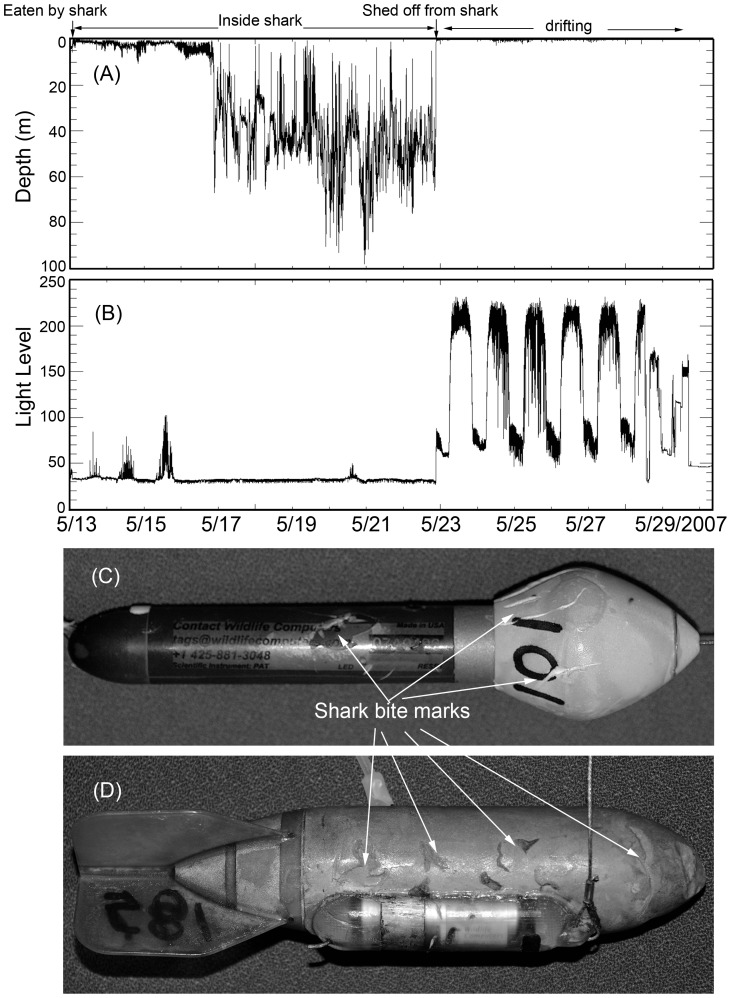Figure 10. Data recorded by a PAT tag deployed on a mature tarpon between May 13th and 29th, 2007, showing: (a) depth; and, (b) light-level recorded every second.
The low to absent light-levels shown in panel (a), and the abrupt changes in depth shown in panel (b) indicate the tag was likely ingested by a shark from just after release May 25th. Examples of recovered tags from tagged tarpon that had likely fallen prey to sharks: (c) PAT tag; and, (d) SPOT tag, both bear the tell-tale teeth marks (based on spacing and serration) of a shark. Although we cannot identify the species of shark by the bite marks on the tag, it seems plausible that a bull shark was responsible given that the other large shark species are relatively rare in the region, whereas the attack occurred at the location of highest bull shark density in the area.

